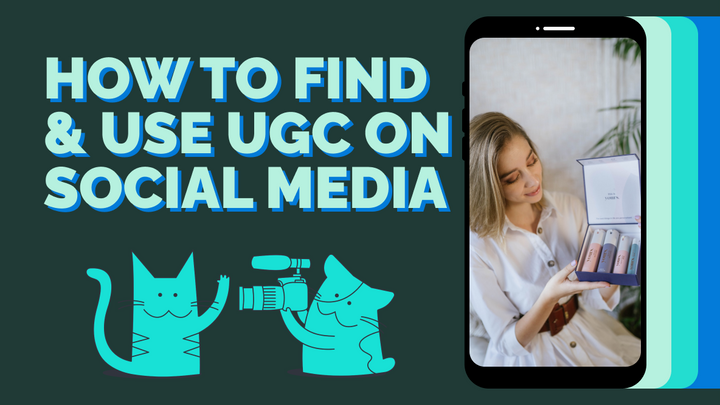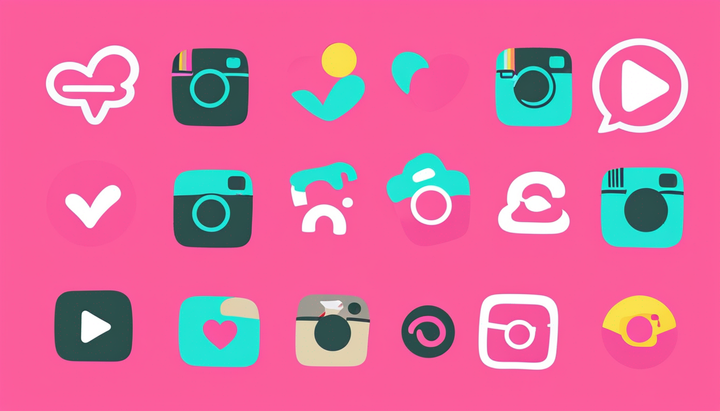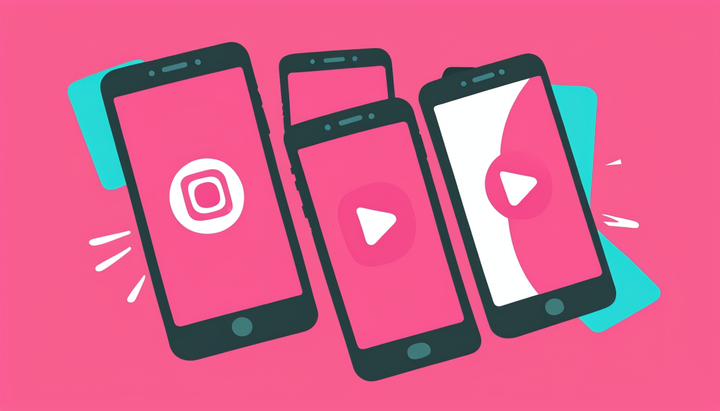How to Become a UGC Creator (and Get Paid for It)
You've probably heard people on social media talking about UGC and how it's blowing up as a way to make money on social media. In this article, I break down what UGC is, how to get started as a creator, and some common mistakes to avoid.
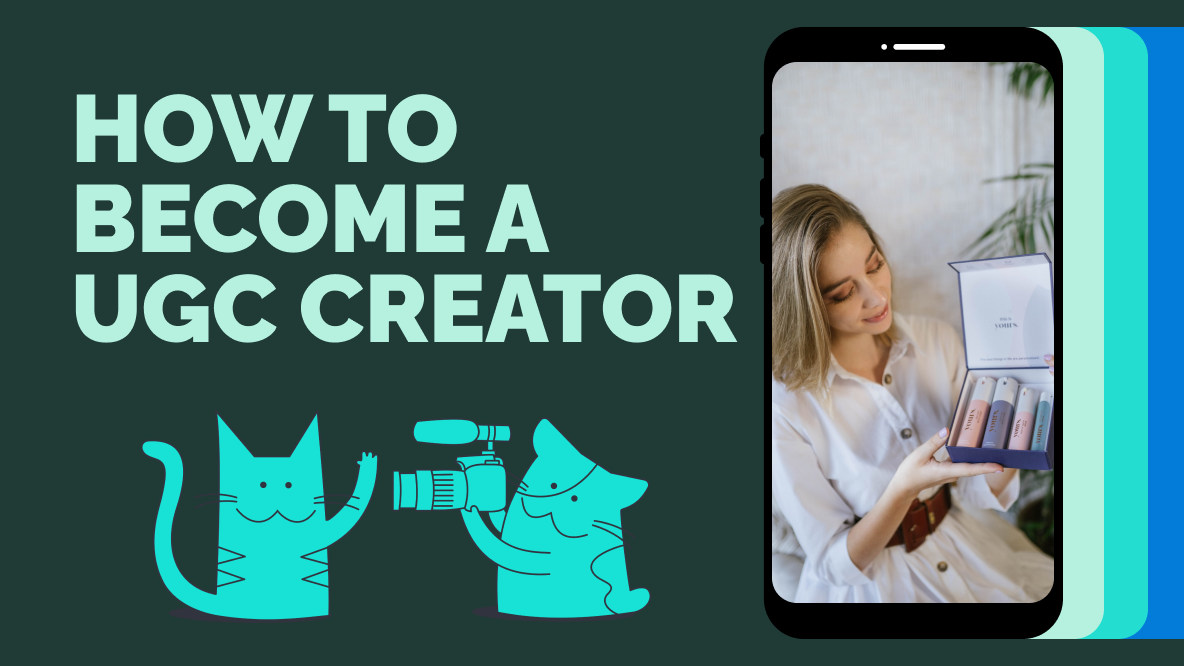
Making money on social media is kind of the dream. Literally. According to the 2022 Influencer Report from the Morning Consult: "26% [of Gen Z survey respondents] strongly agree they would take the opportunity to become an influencer" and "86% are willing to post sponsored content for money."
Those numbers are being inflated and misinterpreted in all the latest think pieces about the future of social media and the habits of Gen Z for shock value, of course, but it is true that many young people want to make money from social media content. And you don't have to be an influencer to do that.
Let me introduce you to the concept of User-Generated Content (UGC).
If you're already acquainted with UGC and want to get down to the nitty gritty of how to start creating and getting paid, use the Table of Contents below to navigate this article more quickly:
- What Is User-Generated Content and Why Is It Valuable?
- How to Get Started as a UGC Creator
- What to Include in Your Portfolio
- How to Find UGC Jobs from Brands
- Common Mistakes to Avoid
Alright, let's get into it!
What Is User-Generated Content and Why Is It Valuable?
UGC is content created by users of a brand or product. Typically, brands source this content organically by finding existing customers who are already talking about them online. If you see a brand reposting a creator's Reel or sharing a screenshot of someone's Tweet, that's UGC.
With organic UGC, brands will tag or otherwise credit the original creator, like in this Instagram post from Apartment Therapy. Recently, however, brands have started earmarking some of their marketing budget for paid UGC because it's so valuable that they're willing to buy it (from you).
From the brand's perspective, UGC is valuable because it provides people with social proof. Social proof functions on the proven concept that people are more likely to trust other people (even people they don't know, like strangers on the internet) than they are to trust brands. Sharing content created by real users, not an internal marketing team, lends credibility to the brand and their product. After all, they have customers who not only like and use their product but enjoy it so much that they want to talk about it online.
This concept of social proof is also why User-Generated Content is an easier field to break into than social media influencing. You don't need a following or a presence to create that valuable UGC that brands want — and are willing to pay for.
How to Get Started as a UGC Creator
There's a much lower barrier to entry for breaking into UGC than influencer marketing. Like I mentioned earlier, there's no follower count or engagement level requirements, because you're not selling your personal influence. So, you don't need a huge following. You also don't need special equipment or super advanced technical skills.
So, what do you need to start making money on TikTok (and beyond)?
Here are the steps we recommend for anyone just getting started with UGC:
1) Make a UGC Specific Account
Not only do you want your UGC account to be separate from your personal or brand accounts for privacy reasons, it's also important for discoverability. Be sure to include "UGC" somewhere in your handle. It's also a good idea to check if the handle is available on all platforms where you'll be active.
Once you've made your account, follow other UGC creators on TikTok and Twitter to get tapped into the community. This is a great way to learn a lot about the industry, make contacts, and just generally get your bearings. You'll notice that a lot of UGC creators are generous with their knowledge and happy to share templates and best practices.
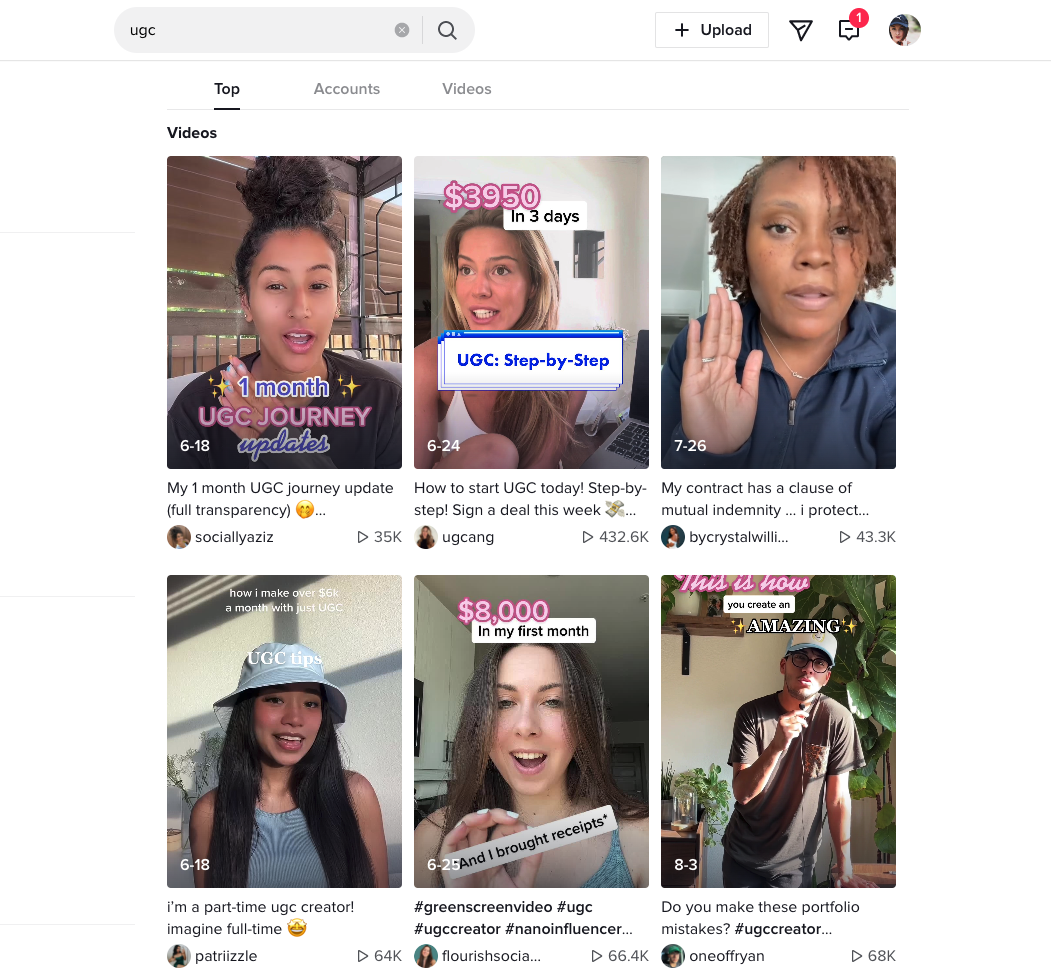
For now, there doesn't seem to be a lot of gatekeeping in the UGC creator community. There's plenty of opportunity to go around which encourages collaboration over competition.
2) Make a UGC Creator Portfolio
Just like with any creative job, you'll need to show brands what you can do if you want them to hire you. That's where your portfolio comes into play. This is the biggest hurdle for most beginner UGC creators: putting together a portfolio and making it really polished and professional, but it doesn't have to be complicated.
Your portfolio should be a scrollable, static link rather than a slideshow or a Google Doc. Wix and Squarespace are good options for easy portfolio sites. More important than where you host your portfolio, however, is what you include in it.
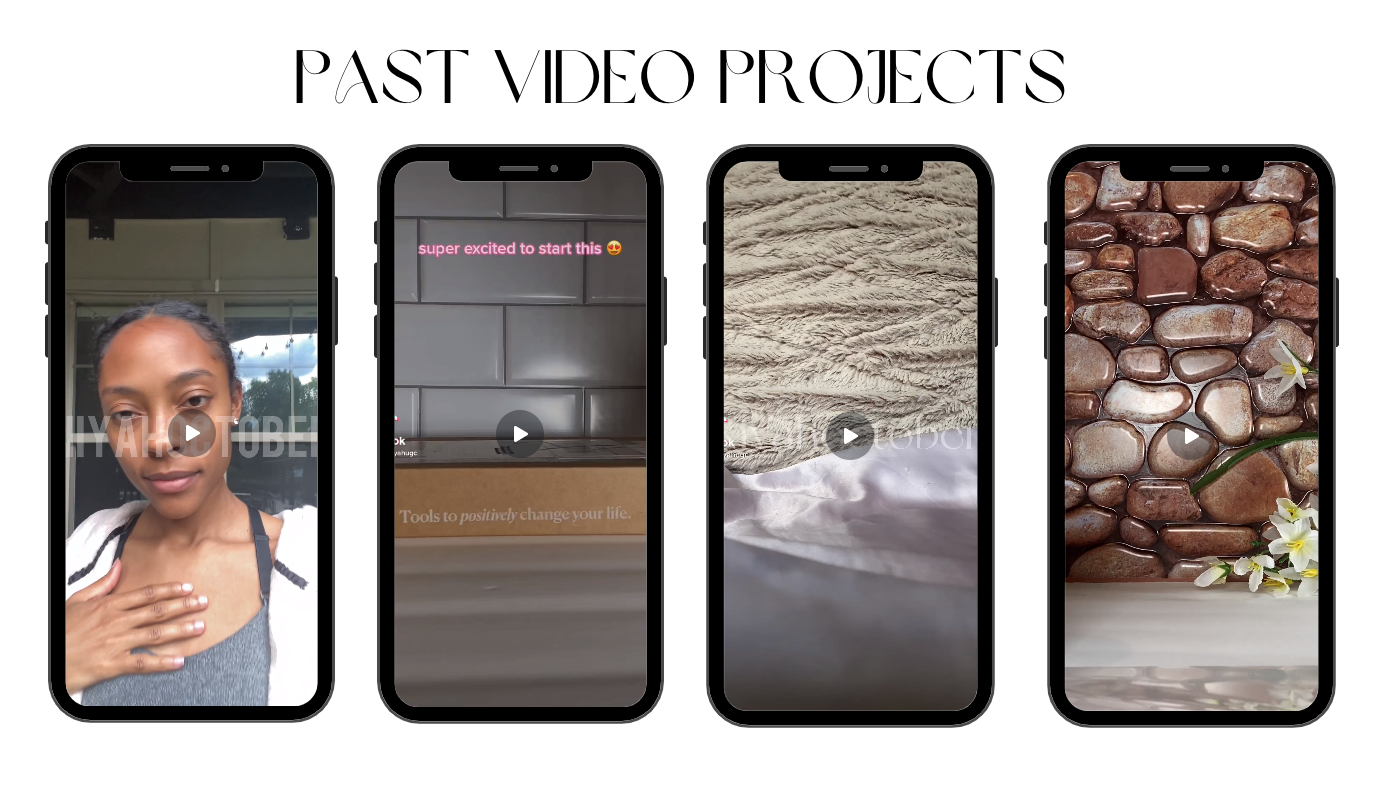
The key thing brands want to see when they look through your portfolio is if you can create the kind of content they're looking for and it should be the main focus of your portfolio, not buried on page three. Here's what we recommend including in your portfolio:
- A short intro about yourself. This is where you include any relevant work history (content you've created for other brands).
- Photos and videos of your work. It's incredibly important to include video and not just product photography, as video is king in marketing right now so most brands looking for UGC will be searching for someone who can make video.
- Contact info. While you can conduct business outreach and communications through your social media DMs, it's best practice to have a dedicated email address and to include that in your portfolio to make communication clear and easy.
Staring at a blank portfolio, wondering how to start is the hardest part. Here's Kapwinger (and UGC creator) Katie Xu's advice for how to put together your first portfolio:
@ugcconnect Reply to @elaquezada ok but why was I so out of breath walking and talking 😅 #ugc #ugcportfolio #ugctips #ugccreator #ugcommunity ♬ original sound - Katie Xu | UGC Creator & Agent
The big takeaway from this advice is what Katie recommends if you don't have any existing UGC work to reference in your portfolio. She says to go and make some with items you already own. Here are a few examples of types of "UGC" you can make when just getting started:
- Take product photography and videos of aesthetic items you already own.
- Film some unboxing videos with natural reactions.
- Film yourself using a product you love and give a short tutorial on it.
This content doesn't need to be hyper professional, either. Brands are looking for content that looks like it was made by an everyday user of their product. Simple smart phone photography and videography done with good natural lighting is perfect. You don't need to heavily edit your work, but we recommend using an online video editing tool to cut together multiple clips and add captions.
3) Start Finding UGC Jobs from Brands
Now that you've got a stunning portfolio created, it's time to get paid. There are three main ways that you can get the attention of brands who need UGC.
1. Cold Outreach. This is probably the most difficult way to find UGC jobs because you might not be talking to someone who's already in the market for UGC so it's a harder sell. Rather than reaching out to specific brands, TikTok creator @UGCang recommends pitching to PR and marketing agencies instead:
@ugcang Pitch Smarter, Not Harder 💸 Increase your reach with this UGC strategy #ugctipsforyou #ugcstrategy #ugcpitch #ugcbrandoutreach #ugcdeals ♬ original sound - Chloe Hayward
Regardless of whether you're pitching single brands or agencies, you can find UGC specific email outreach templates on TikTok from other creators to help you send that first email.
2. Twitter "Casting Calls." Another way to find UGC jobs is by searching for brands that are actively looking for UGC creators. Instead of you reaching out to them, you're responding to their broadcast. This means you know for a fact they're looking for UGC but it also increases the competition, since other UGC creators will be pitching them at the same time as you are.
To find brands who are actively looking, try searching Twitter for Tweets like this one:
Looking for UGC creators! - Looking for women creators aged 20+
— Nico Muoio (@NicoMuoio) August 23, 2022
Comment below and I will DM you.
(If anyone in my network has some creators in their network a RT would be incredible)
Sort your search results by newest to make sure you're hopping on fresh opportunities.
3. Organic Discovery through Pinterest. Publishing your portfolio work on Pinterest and tagging it with relevant keywords ("UGC Content," "UGC Creator," "UGC Example," etc.) can be a good way to leverage some organic discovery.
If you do choose this route, make sure to create and use a UGC specific Pinterest account. While you should always add your portfolio link in your Pinterest bio, keep in mind that your profile and pins will serve as a sort of secondary portfolio, too. Curate that to draw the kinds of brands and partners you want to work with and make sure your contact info is apparent so if brands do want to work with you, they know how to get in touch.
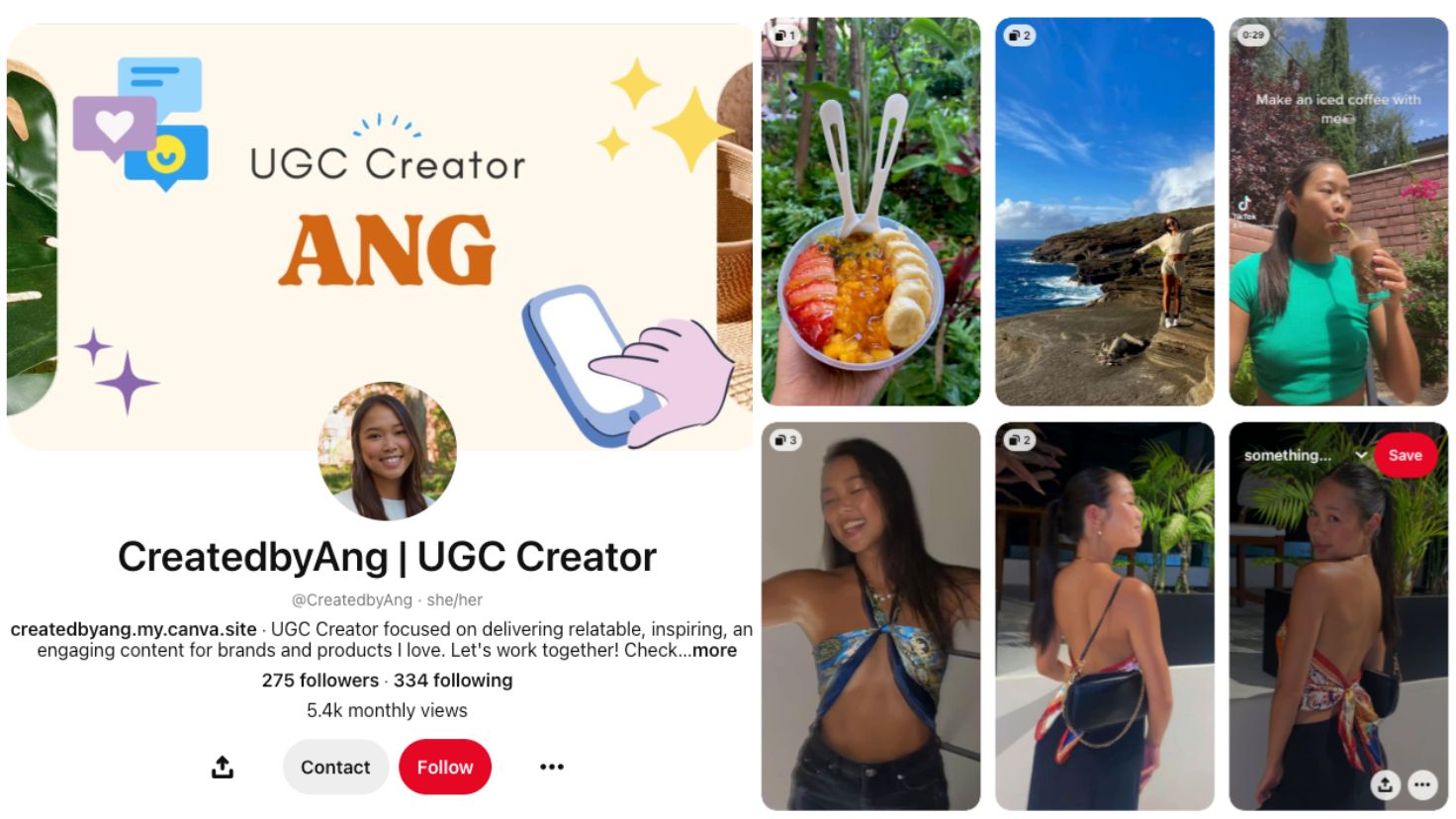
I wouldn't recommend only using Pinterest to find UGC jobs, but it's a useful extra channel to consider in conjunction with your other outreach efforts.
Now that you know how to get on a brand's radar, let's talk about some mistakes to avoid when working with brands as a UGC creator.
Common Mistakes to Avoid
It's easy to make mistakes when you're just getting started. Fortunately, there are plenty of other UGC creators who have been there, done that, and lived to tell the tale on social media so you don't have to.
These mistakes can be grouped into two categories: mistakes you make before you get the brand deal (portfolio mistakes) and mistakes you make after you secure the deal (contract mistakes).
UGC Portfolio Mistakes
1) Including Your Rates in Your Portfolio
You can include your UGC rates in your portfolio, but we recommend you don't. Katie Xu, a Kapwinger and UGC creator in her own right, has found that one of three things will happen when you include your rates:
@ugcconnect Shoukd you include your rates in your UGC portfolio? I wouldn’t if I were you. #ugcrates #ugctips #ugc #ugcportfolio ♬ original sound - Katie Xu | UGC Creator & Agent
- Brands will think your rates are too expensive. They'll immediately rule you out and choose someone with lower rates.
- Brands will think your rates are too cheap. If you're quoting rates that are well-below budget, brands won't tell you that. They'll just pay your cheap rate and you'll be cheating yourself out of the extra value for your work.
- Brands will think your rates are just right. This sounds like best case scenario, but it limits your bargaining power and negotiating options. You always want a little wiggle room to get the best deal for yourself.
Instead of including rates in your portfolio, let brands know that rates are negotiable when they ask to see your portfolio. Keep two numbers in mind: your asking number and the actual lowest amount you'd be willing to accept. The lower number should still be a number that feels fair and that you would be happy to receive.
2) Not Making the Content the Focus of your Portfolio
Less is more when it comes to your portfolio. It should be an easy to navigate site with the UGC content front and center. Many UGC creators recommend including a "What Is UGC?" section to sell brands on the value of UGC content, but that's typically not necessary.
If a brand is looking at your portfolio, they likely already know what UGC is and how valuable it is — they're considering hiring you to create it, after all. If you're doing cold outreach and are worried the brand doesn't already know about UGC, include that value proposition in your email pitch, not your portfolio.
Here are some other common UGC portfolio mistakes to avoid from the perspective of someone who reviews portfolios when considering creators to hire for his TikTok agency:
@oneoffryan Do you make these portfolio mistakes? #ugccreator #ugccreators #ugccontentcreator #ugc #ugccommunity #creatorstrategy #tiktoktips ♬ Love You So - The King Khan & BBQ Show
UGC Contract Mistakes
1) Not Negotiating Payment Properly
There are a two things you want to include in your contract so that you don't get taken advantage of by brands: payment upfront and inclusion of the product for review.
That first bit is pretty self-explanatory. It is the bare minimum to require half of the payment upfront and the other half on completion. Most creators request full payment upfront.
The second part is more of a gray area as UGC creation continues to expand as an industry. It should always be included in your contract that you'll receive the product you'll be reviewing for free. A lot of brands will want to do just gifted collabs — they'll send you the product for free and in exchange, you create content about it.
I would advise against these collabs unless the value of the product far exceeds your normal rates. Even if you're just starting out, there's no need to do work for free because you can create your own portfolio content with things you already own. Unlike an influencer just starting out who wants the exposure, your personal brand wouldn't be benefitting from this collab. All you're getting is a product.
2) Not Watermarking Your Video Before Payment
This goes hand in hand with upfront payment and should be outlined in that part of your contract. While most brands are operating in good faith, it only takes getting burned once to lose you a week's worth of pay or more. Avoid having your work stolen by using a watermark until the brand pays you.
Adding a watermark doesn't need to be difficult or time consuming. You can simply add a large, half-opacity text bubble of your UGC handle in the middle of your video or image (where it can't be cropped out).
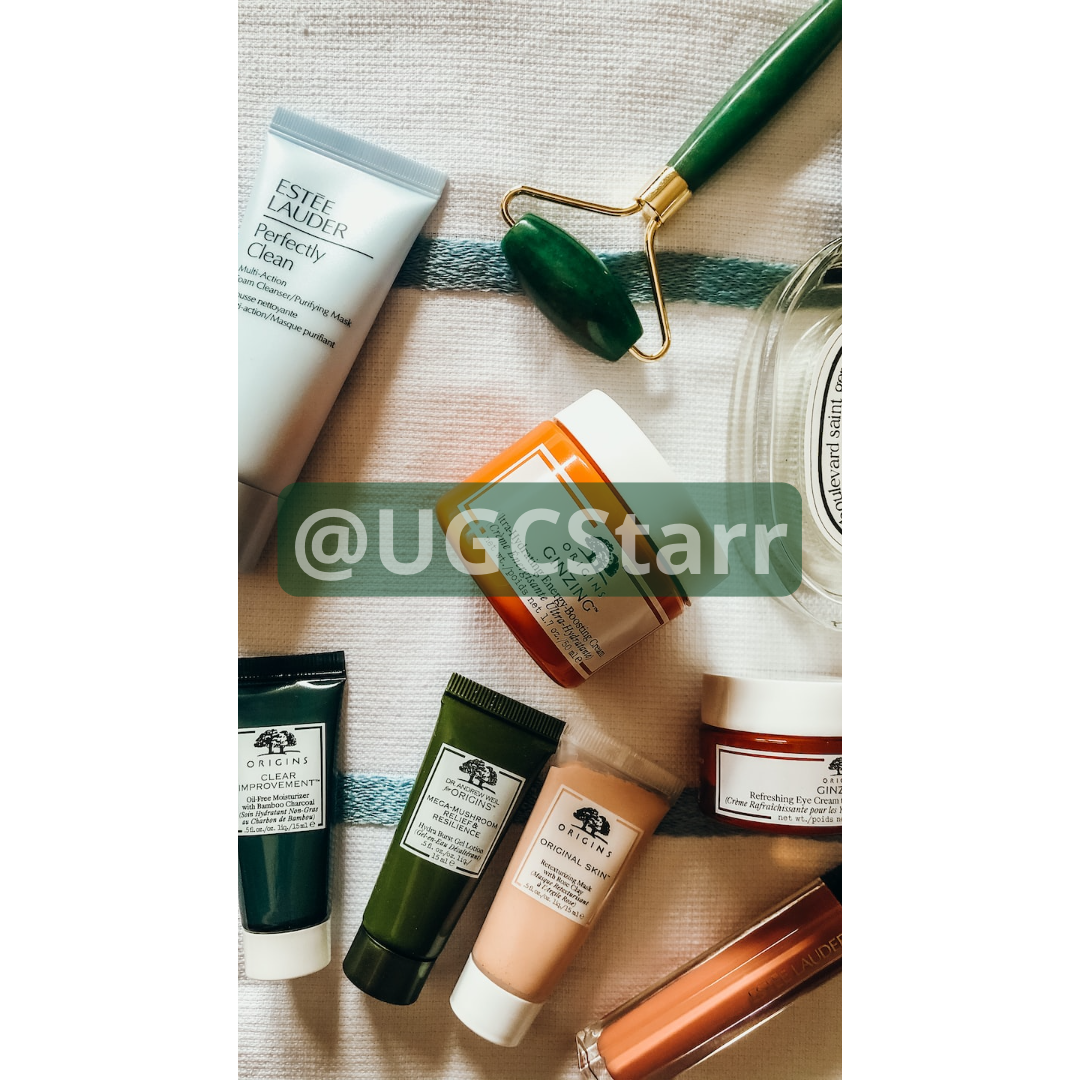
Send the watermarked work for approval then, after you receive payment, send a clean version of the file without the watermark.
3) Not Negotiating Usage Rights
You should include in your contract the stipulations of the usage rights, aka how long the brand can legally use your content without needing to pay you more money.
More experienced creators know to give a brand usage rights for an initially agreed upon amount of time (30 days is a good rule of thumb) and then charge a renewal fee if they want to use it for longer, such as in an ongoing ad campaign.
Drafting contracts can seem daunting if you don't have any experience with legal jargon. To make it easier for yourself, look for templates online from other creators. Many standard freelance contracts can be adapted to suit your needs. If you know someone who practices or has studied law, you can have them look over your contract to make sure it's airtight.
For more creator resources and info, check out our Resource Library. We post new content there weekly made for creators just like you.
Create content faster with Kapwing's online video editor →
